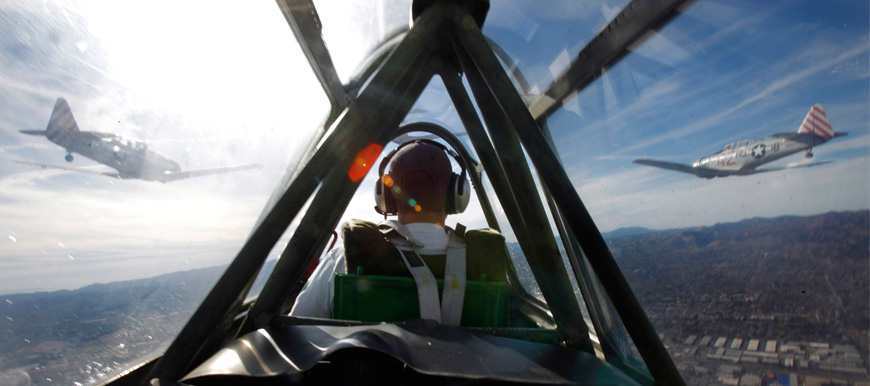Aviation technology program taking off
Utah State University’s Aviation Technology program is expanding this year by implementing a new teaching method and plans to create a new masters program.
The program is designed to help students get jobs, including on the international level.
Aaron Dyches, chief flight instructor at USU, said that the goal of the program is to help students with little or no flight experience and make them into professional pilots. There are about 160 students currently in the program.
The program currently uses computer-based training (or CBT) to create a more interactive experience, allowing students to go at their own pace. The original teaching method had students watching videos and taking notes.
With this CBT, there is a more blended method of both the online class format and in-class lectures. In these lectures, students apply what they learned from the online class.
The program also provides flight experience and hours required for a student to receive a license. These licenses are in three tiers, or “ratings,” which are Private, Instrumental, and Commercial. With each license comes more job opportunities. It also requires students to become flight instructors by receiving Certified Flying Instructor certificate (or CFI), which they can then use to teach others how to fly in order to gain more flight experience. Students who go through the program will be able to get their licenses to fly professionally.
There are also opportunities to help students find employment through various bridge programs. The bridge programs help the students get jobs at airlines, like at Skywest or Envoy Airlines.
The program has caught international attention.
Abdulrahman Alnassar, a junior going through the program to be trained as a professional pilot, came from Saudi Arabia to learn how to fly on a scholarship. After he graduates from USU, he is guaranteed a job at Saudi Airlines as a First Officer.
“I like the program,” Alnassar said. “I have friends studying at other university flight schools. I found out about Utah State, and it isn’t too hard, but it’s also not too easy. Some of my friends don’t even get to fly, so some of them transferred here this semester.”
Andreas Wesemann, assistant professor in the program, said attracting international students is a key growth area for the program.
“We currently have students from Singapore, South Korea and Saudi Arabia. We are in the process of looking at other airlines and other international country partners,” Wesemann said. “We think that this is a potential growth area for the aviation program. We anticipate interest in our growing program for more international students to come here.”
With this growth, Wesemann said he hopes to create the masters program.
“This will be an opportunity for people to work on a masters in aviation to prepare them, whether it’s in maintenance management, safety specialization or as a professional pilot,” he said.
Wesemann said he also hopes to create an unmanned aerial systems specialization to create an interest in the use of drones. He hopes the course will be offered in fall of 2016.
Dyches said the program’s small size has attracted students to USU.
“We are small enough that we are still a family. I know my students and my students know about me,” he said. “We care about their progress and how they are doing. … We have been growing a lot because of the work of our flight assistant chiefs. We have also been able to make our program look more professional and raise the level of training by keeping the FAA standard.”

